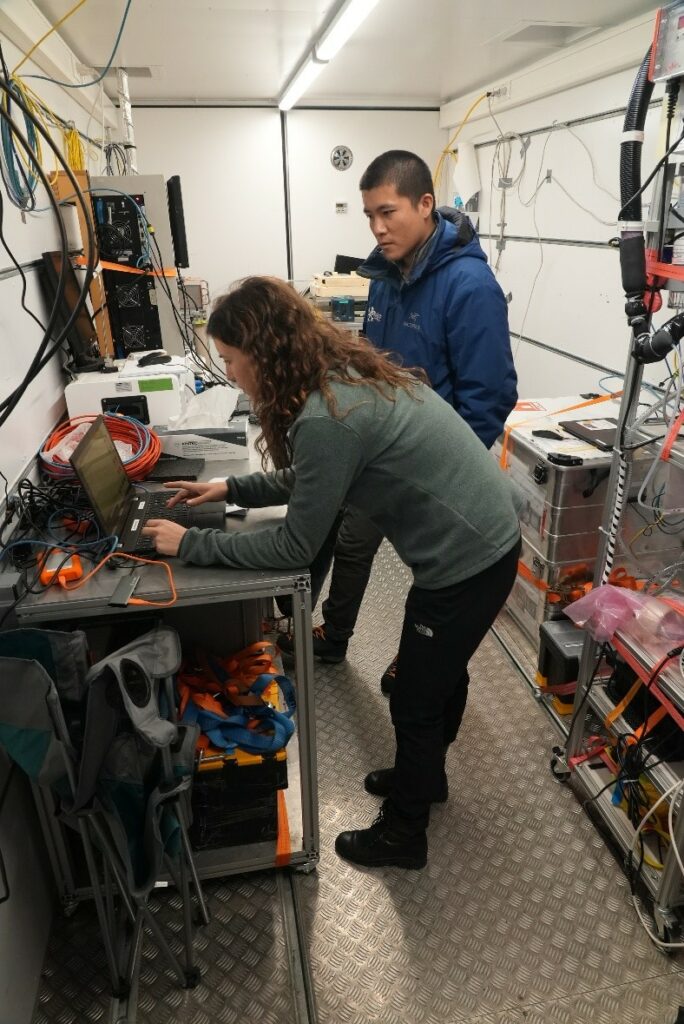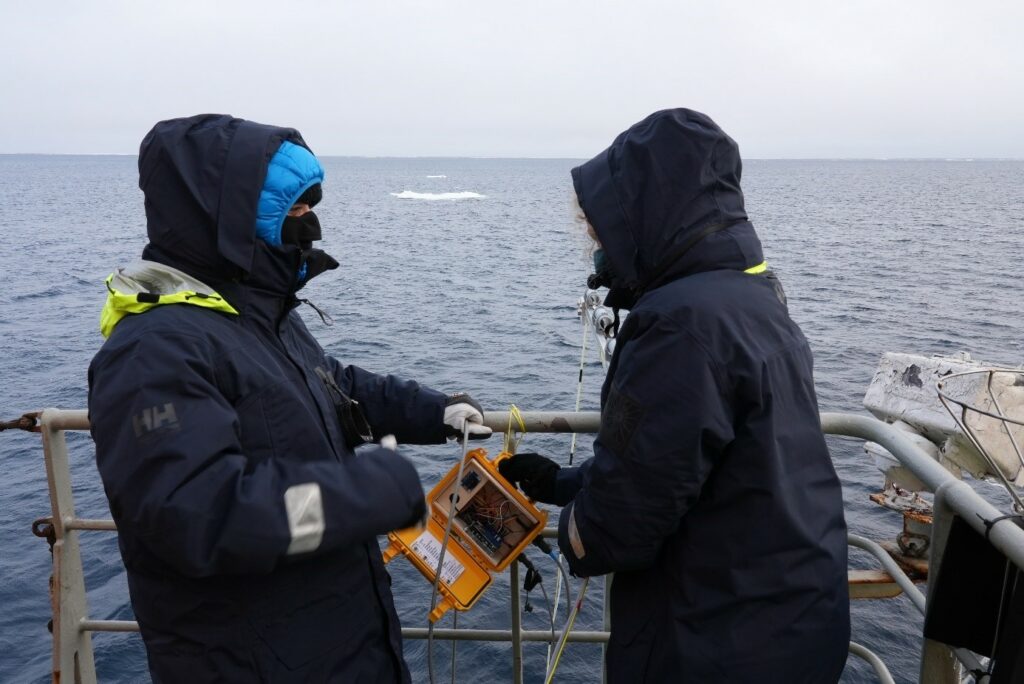80.17° North, 96.41° East – Cloudy, – 0.4° C, wind speed: 12 m/s
Tracking the atmospheric water cycle in the Kara and Laptev Seas
The water cycle describes the transport of water on Earth. The atmospheric part of the cycle includes evaporation from the ocean and terrestrial waters, atmospheric transport, formation of clouds and depositions by rain and snowfall. The very dynamic weather situations over the Kara and Laptev Seas provide a natural playground to study many processes along the atmospheric water cycle.
The ocean plays a key role for many of these atmospheric processes. For example, it is the largest source of water vapour, it generates aerosols from sea spray and emits (trace) elements. However, the ocean-atmosphere exchange and formation of aerosols are processes which are not yet fully understood.
Water vapour and aerosol particles are important ingredients for the formation of clouds. The Arctic cloud cover affects the regional climate, for example by shielding the ocean from the Sun. Knowing the abundance of aerosols and how water is transported in the atmosphere, contributes to our understanding of Arctic cloud formation and offers insights into the atmospheric sources and cycling of (trace) elements. The Kara and Laptev Sea regions are particularly interesting for studying these processes because of the diverse aerosol sources which include the ocean, high-latitude islands and long-range transport from the continents.
During rain and snow fall, aerosols are washed out of the atmosphere and deposited. They provide an important supply of trace elements to oceanic and terrestrial ecosystems. Aerosol concentration and chemical composition also impact human health and nutrition via agricultural crops, for instance.
The atmospheric team of the Arctic Century Expedition studies the links between the aerosols, trace elements and the atmospheric water cycle. To understand these links, the team is continuously measuring the properties of atmospheric water vapour and the abundance of aerosols during the expedition. Whilst on the ship, they also collect ocean water, rain, snow and fog, but visits to islands provide the opportunity to collect fresh water from lakes and rivers, as well as snow still lying on the ground. These samples will be analysed for their chemical composition, giving information on their origin and routes by which they have reached their final destination.
The team has a dedicated container on board, packed with sensing systems. These include two cloud chambers measuring the properties of cloud-forming aerosols, laser spectrometers collecting data on the chemical composition of air and water vapour, and high-resolution cameras monitoring the sea state from the Akademik Tryoshnikov. These instruments are performing continuous online measurements to gain an immediate insight into the distribution of water vapour and aerosols over the Kara and Laptev Seas. The container is positioned on the foredeck to avoid any contamination from the vessel’s exhaust.


Header photograph: The container is positioned on the foredeck of the Akademik Tryoshnikov to avoid any contamination.
Rights: © 2021 Swiss Polar Institute, CC BY 4.0 